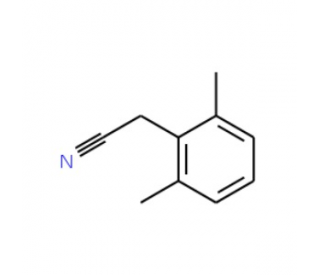詳細說明
Species Reactivity
Human
Specificity
Detects human Cadherin?6/KCAD in direct ELISAs and Western blots. In direct ELISAs and Western blots, no cross?reactivity with recombinant human (rh) Cadherin-8, -11, -12, -13, -17, rhECAD, rhMCAD, rhNCAD, rhRCAD, rhPCAD, or rhVECAD is observed.
Source
Monoclonal Mouse IgG1 Clone # 427909
Immunogen
Mouse myeloma cell line NS0-derived recombinant human Cadherin?6/KCAD
Ser54-Ala615
Accession # P55285Formulation
Supplied 0.2 mg/mL in a saline solution containing BSA and Sodium Azide.
Label
Alexa Fluor 350
Applications
Recommended
ConcentrationSample
Flow Cytometry
0.25-1 μg/10 6 cells
MG-63 human osteosarcoma cell line stained in buffer containing Ca 2+ and Mg 2+
Please Note: Optimal dilutions should be determined by each laboratory for each application. are available in the Technical Information section on our website.
Preparation and Storage
Shipping
The product is shipped with polar packs. Upon receipt, store it immediately at the temperature recommended below.
Stability & Storage
Store the unopened product at 2 - 8 °C. Do not use past expiration date.
Background: Cadherin-6/KCAD
The cadherin superfamily is a large family of membrane-associated glycoproteins that engage in homotypic, calcium?dependent, cell-to-cell adhesion events. The superfamily can be divided into at least four subfamilies based on its member’s extracellular (EC) regions and cytoplasmic domains (1, 2). These include classical cadherins, desmosomal cadherins, protocadherins, and cadherin-like molecules that contain a variable number of EC and transmembrane (TM) domains (1). Cadherin?6, also known as KCAD or K-cadherin, is a classical cadherin of 110?120 kD that has at least one full length and two alternate splice forms ranging in size from 105?120 kDa (3). Human Cadherin-6 is synthesized as a 790 amino acid (aa) type I transmembrane glycoprotein that contains a 18 aa signal peptide, a 35 aa prosequence, a 562 aa extracellular region, a 21 aa transmembrane segment, and a 154 aa cytoplasmic domain (4, 5). There are five EC cadherin domains that are approximately 110 aa in length. This pattern is consistent with classical cadherin family molecules that are modular in their extracellular region and mediate calcium?dependent cell-to-cell adhesion through their Ca++-binding repeats (2). Due to the absence of a His-Ala-Val motif in its most N-terminal cadherin repeat, Cadherin-6 can be further classified as a type II classical cadherin (4). One Cadherin?6 splice variant (termed 6/2) shows a 9 aa substitution for the 94 aa that span residues 283 to 376 of the full-length extracellular region (3). A second splice variant shows a 36 aa substitution for the C-terminal 163 aa of the transmembrane and cytoplasmic region (6). The extracellular region of human Cadherin?6 is 98% aa identical to rat Cadherin?6 extracellular region, plus 60% and 58% aa identical to the extracellular regions of human cadherin 8 and 11, respectively. Cadherin-6 has high expression in kidney, brain, and cerebellum, and low expression in lung, pancreas, gastric mucosa, and cytotrophoblasts (4, 5, 7, 8, 9). Cadherin-6 is also found in renal, lung, and ovariancarcinoma (7, 10). As a classic cadherin, Cadherin-6 will form homodimers and promote intercellular adhesion with itself and possibly, cadherin-9 and -14 (4, 11).
References:
Koch, A.W. et al. (2004) Cell. Mol. Life Sci. 61:1884.
Angst, B.D. et al. (2001) J. Cell Sci. 114:629.
Mbalaviele, G. et al. (1998) J. Cell Biol. 141:1467.
Shimoyama, Y. et al. (2000) Biochem. J. 349:159.
Shimoyama, Y. et al. (1995) Cancer Res. 55:2206.
GenBank Accession # P55285.
Xiang Y.Y. et al. (1994) Cancer Res. 54:3034.
Marthiens V. et al. (2002) Mol. Cell Neurosci. 20:458.
MacCalman C.D. et al. (1998) Am J Reprod. Immunol. 39:96.
Sella, G.C. et al. (2001) Cancer Res. 61:6977.
Shimoyama, Y. et al. (1999) J. Biol. Chem. 274:11987.
Entrez Gene IDs:
1004 (Human)
Alternate Names:
cadherin 6, type 2, K-cadherin (fetal kidney); cadherin, fetal kidney; Cadherin6; Cadherin-6; CDH6; KCAD; K-cadherin (fetal kidney); K-Cadherin











 粵公網(wǎng)安備44196802000105號
粵公網(wǎng)安備44196802000105號